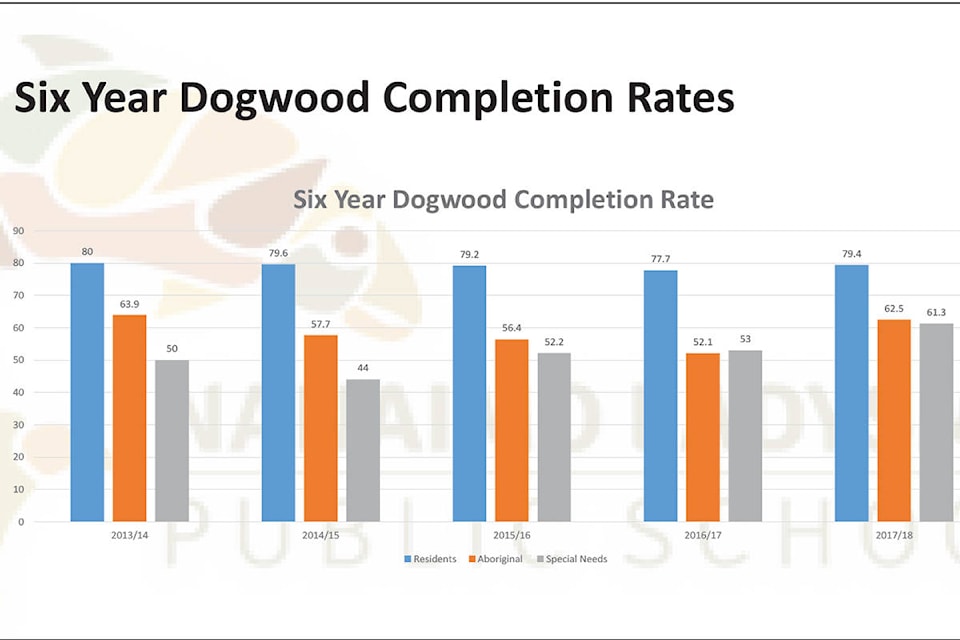With its aboriginal graduation rate the second highest ever, Nanaimo Ladysmith Public Schools is looking to increase the number.
The B.C. Ministry of Education released its annual aboriginal education report in November and it said 62.5 per cent of district aboriginal students graduated with a dogwood diploma in 2017-18. The district saw a historical best in 2013-14 when 63.9 per cent graduated, but numbers have declined in subsequent years, with 52.1 per cent graduating in the 2016-17. The district had 2,505 aboriginal students in 2017-18, according to ministry numbers.
B.C. schools are transitioning to a new curriculum that includes aboriginal cultural elements, and it is a factor, said Ted Cadwallader, school district principal of aboriginal education. The curriculum has shone a light on the importance of including indigenous content, according to Cadwallader.
“In the past, that has happened in bits and pieces and in spurts and in people who are interested in it and in a certain section, Grade 4 mostly, of our curriculum,” Cadwallader said. “Now that it’s spread across the curriculum, everybody’s responsible for including that in their classroom and in the learning journey of their kids and because of that, our teachers have had to reach out to experts, like we’ve had in the district in past years, to figure out how to do that better.”
When asked what the district can do to increase graduation so that it is on par with non-aboriginal students (79.4 per cent), Cadwallader said there are a variety of strategies. Specifically, the district is getting to know each of its indigenous students, assessing whether they’re on a path to graduation from kindergarten to Grade 12 and if they’re not, what’s being done.
“Understanding each and every kid’s specific needs is what we’ve got going on in our data level and working really closely with our teachers and our support staff at a classroom level, so that they have the tools necessary to continue to keep those students on a path to graduation,” he said.
Denise Wood, Nanaimo teachers’ union president, is happy with the results, but said it is difficult to determine the factors for the increase as it is a jump from one year to the next with different students.
“We can’t be complacent and we can’t just be congratulatory … we need to keep working at it and we need to figure out where we’re working at,” Wood said. “What is it that we’re doing that is creating success for students?”
Chris Beaton, executive director of Nanaimo Aboriginal Centre, said there is no denying the increase is positive, but more can be done. The grad rates should be on par with one another, he said.
“I encourage the school district to continue its efforts to invite anyone to the table who shows a willingness to be involved,” Beaton said in a message to the News Bulletin. “I encourage the district to continue to look at innovative programs that are culturally relevant and that engage our indigenous students.”
reporter@nanaimobulletin.com
Like us on Facebook and follow us on Twitter
